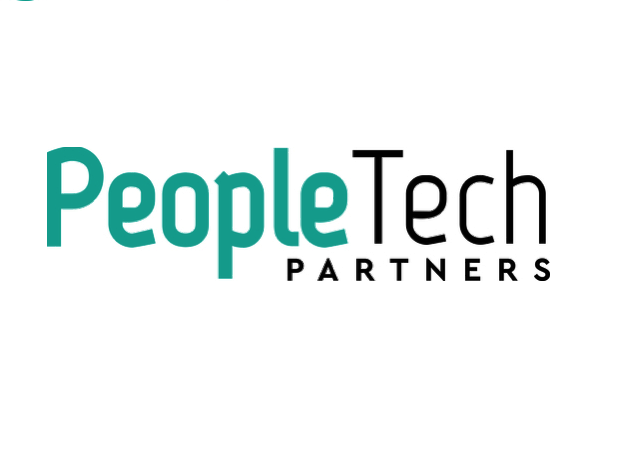By: Jess Yuen
How to achieve an impactful relationship with your Chief People Officer
Key Takeaways
- The most effective CEO-CPO relationships are closely aligned and have complementary skills, and focus on strategic thought partnership and reflective coaching (mirror).
- Watch out for these relationship red flags: out of sight, out of mind behavior, swoop-and-poop interactions, left-out or left-behind communications, and ruptured values.
- If it’s not working, get curious, ask for what you need, and dedicate time. And if it’s really not working, part ways.
As the CEO, your job is to make the business successful. You may have a brilliant strategic direction for the company and a plan to achieve it. However, if you don’t bring the entire company along with you, you won’t get there. Yes, the Chief People Officer (and their team) attract, develop, and retain your people; but even more importantly, the CPO is the lynchpin connecting and aligning the organization to the business vision and strategy.
“CEOs should expect their CPOs to be strategic business thinkers as well as people and culture thinkers.” – Michelle Wagner, CEO Mindstrong (and 6x CPO)
The CPO can be your partner here to:
- Confirm that you and your leadership team are on the same page
- Disseminate information to the organization, as well as surface grassroots information back to truly understand where things are working and not, and adjust accordingly.
- Align OKRs and Company internal goals to the business strategy, i.e. hiring, prioritization, etc.
- The list goes on.
Having a good relationship with your CPO will help your business achieve its goals; having a strong relationship with your CPO will accelerate them.
Characteristics of an impactful relationship
Closely Aligned
Are we on the same page? And if we’re not, do we understand why?
Being aligned on strategy, values and priorities across the executive team is key to success. The strongest CEO-CPO relationships figure out how to stay on the same page by communicating with each other and learning to deeply understand and respect each others’ perspectives. Even if there may not be 100% agreement, there is 100% alignment.
This close alignment then flow into better alignment across the executive team and the company. Alignment is about communication, prioritization, and expectation setting at all levels, from CEO to executive team to employees.
Complementary
Do your skills and interests fit together with mine?
Think about what you’re naturally strong at as a CEO and find a CPO that has a complementary profile to you. There are three general types of people leaders. Understand which profile is beneficial for your organization’s current stage and for your strengths and interests.
- Front-end: They act as the face of culture, talking about how people strategy and programs support business goals and strategy. They have a strength in company-wide communications. Oftentimes, their direct reports are especially strong operationally and take on more of the execution.
- Back-end: A back-end leader is adept at the operational pieces, making sure you have a strong infrastructure and the engine is running (e.g. setting up compensation, running performance management, ensuring that benefit renewals are happening). In this case, the CEO usually takes the role as the face of culture instead.
- Full-stack: This profile can do it all. They can be internal-facing but also be building processes at the same time.
Mindstrong CEO Michelle Wagner has experienced the partnership from both sides and frames the relationship in this way: “I love the concept of seeing the CPO as the consigliera/e to the CEO (ignore the crime boss association!). It’s the right-hand person, second loneliest job in the company alongside the CFO, and the operator that helps the CEO see around corners internally while aligning to long-term business plans.”
Regardless of the profile, hire a People leader with high self-awareness, who is excited to build a complementary People team that plays to their strengths and fills their gaps, and most importantly, is your complement who can play to your strengths and gaps.
Strategic thought partnership
Are we stretching each other to think a few steps ahead and around the corners?
The CPO needs to be able to quickly process and respond to left turns and curveballs, as well as push the CEO to think long-term. The CPO is a thought partner that helps develop and lead the company through all the ups and downs, strategically looking three steps ahead and planning for the future. Aon CEO Greg Case notes: “People allocation is as powerful as financial allocation.” As such, it’s important for your CPO to be included in strategic discussions. The CFO role has transformed from number cruncher to strategic #2. As the CPO role transforms from admin to strategic, McKinsey encourages creating your G3 (a strong triumvirate between the CEO-CFO-CPO) to lead the business.
Candid and Honest “Mirror”
Are my words as CEO consistent with what our team is comprehending and experiencing?
A CPO is a coach to you. They’ll listen to the company vision and strategy and observe the lay of the land, and then reflect back to the CEO what’s actually happening on the ground and help adjust the approach accordingly. Mirroring is about observing what’s happening, reflecting back how efforts are landing, and more critically, highlighting where misalignment exists.
Please take a moment to recognize just how tricky this part of the role can be. The CPO needs to act as a confidante and coach to all their peers AND their boss — it’s a complex set of relationships to manage in one role and still uphold strong trust. This is often the hardest part of the job, where trust can easily be broken. Compartmentalizing these relationships while coaching across the group is complex. Done well, a CEO-CPO pair can cultivate a healthy, high-functioning leadership team; handled poorly, a lot of drama and strife may arise.

Elements of a not-so-good relationship
How strong is your relationship? Here’s a checklist of red flags:
❗Out of sight, out of mind:
- CEO cancels / postpones 1-1s. Did you meet with your People Leader at least 1x this week? That’s the absolute bare minimum.
- CEO doesn’t have a chance to respond to People Leader’s async questions. Without your input, are they at an impasse?
❗Swoop and poop interactions:
- CEO asks People Leader to make a decision, but at the 11th hour swoops in with a strong alternative opinion, causing a lot of rework
❗Left-out or left-behind communications:
- CPO is the last to hear about decisions. For example, you as CEO decide to shift from a hybrid to a fully-remote environment, and inform the People Leader of this *after* informing your CFO / COO / etc.
- It doesn’t just apply to people decisions either. For example, if there’s a major strategy shift, is the People Leader brought in after the shift has been decided?
❗Ruptured values
- Fundamental disagreement on core issues regarding what we believe matters or what we are optimizing for.
What to do if it’s not working?
When the CEO-CPO relationship isn’t on solid ground, the entire company feels it and it jeopardizes the business strategy. Fine tune the relationship dynamic with these 3 levers:
Dedicate time
The CEO and CPO are individuals – each with different perspectives, triggers, and influences. It takes time to learn each other. Like any relationship, staying in sync requires an investment of time and effort.
Carve out the time and space for a strong dynamic to develop. If meetings keep getting cancelled or reschedule, figure out how you can connect. Is it in 1-1s? Texts? Hallway conversations?
When 4x CPO, Jevan Soo Lenox, started at biotech startup Insitro, he reflected on what made his relationship with his prior CEO (Stitch Fix’s Katrina Lake) so successful. Over the years, their working relationship also became a friendship – reflected in the unstructured, unscheduled camaraderie of their texts, banter, and impromptu conversations. In essence, they had unstructured space to explore topics that would never receive the required attention otherwise. While being friends with the CEO wasn’t a requirement for Jevan, the time was. So, he asked Insitro CEO, Daphne Koller for a standing monthly dinner. A couple unscheduled hours each month to address anything and everything. In those spaces, they have covered valuable ground including working sessions (e.g., prepping for a big re-org), heart-to-hearts (e.g., Is this the right place for Jevan?), and just getting to know each other.
Get curious
When in conversation, if the CPO says something crazy or that you immediately disagree with, first pause. Then remind yourself that this is someone that you respect (or at least at one time respected), assume good intent, and try to peel back the layers on their thinking. What is the problem they are trying to solve? What are they optimizing for? What was the train of thought that led them to this conclusion? While their proposed conclusion may not be something you agree with, find common ground to walk back to and highlight where the gaps are from there.
Ask for what you need
Be direct about getting what you need. If you find yourself complaining about the relationship, what is driving you nuts? Step back to reflect on what to explore or express. Is it resources? Decisions? Time?
For example, one CPO-CEO pair that I coached kept getting frustrated because it wasn’t clear who had final decision rights, and that lack of clarity, led to back-and-forth decisions, driving both of them nuts. Ultimately, they came up with a decision making structure to define when the CPO owned a decision, when the CEO owned it, and what input they would provide to the other. It was a simple structure but made a world of difference.
If there is an impasse and changes are needed for the relationship to be productive, reflect on how much change is reasonable and on what time table to determine if it’s a relationship that can stand the test of time. Ultimately, a key ingredient to this relationship is time: CEOs need to invest time with their CPOs, and CPOs need to ask for the time (and input and resources) they need to enable the business to thrive.
Additional reading:
- People Before Strategy: A New Role for the CHRO (HBR)
- The Talent First CEO (McKinsey)
- Hottest hypergrowth hire: Chief People Officer (Jess Yuen)
About Jessica Yuen
Advisor to scaling startups and executive coach
Jess is a global Chief People Officer, C-suite advisor, and CEO coach whose work is driven by the belief that investing in people leads to better business outcomes. She spent 15 years driving growth at innovative organizations partnering with CEOs at Gusto, Khan Academy, and McKinsey. Her expertise lies in accelerating growth of technology-focused companies while pro-actively cultivating healthy sustainable cultures.
Currently, Jess leads a consulting company serving CEOs and executives at scaling technology companies from seed stage through IPO. Jess earned dual B.S. degrees from University of California, San Diego in Electrical Engineering and Economics, and an M.S. in Electrical Engineering from Stanford University.
About PeopleTech Partners
PeopleTech Partners (PTP) is the network powering the future of work. PTP is an exclusive group of more than 250 Executive Leaders accelerating the development and growth of People technologies. PTP partner’s with a diverse set of exceptional founders to share feedback and product insights and then evangelize portfolio company’s solutions to drive adoption. PeopleTech Partners’ family includes more than 100 companies with city hubs across the San Francisco Bay Area, New York, Seattle, Austin and Los Angeles.

